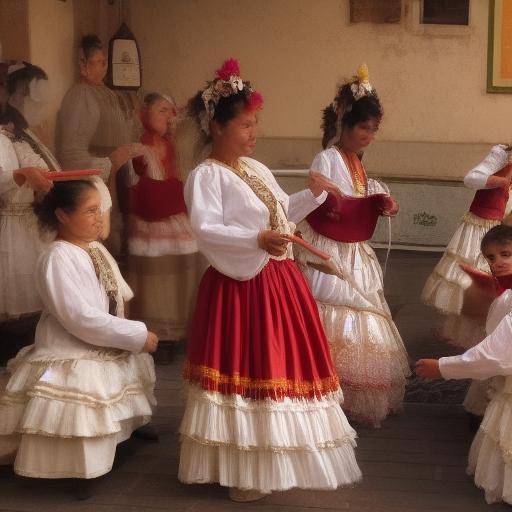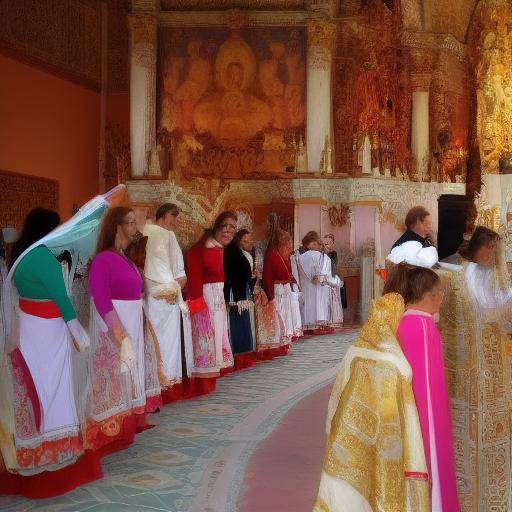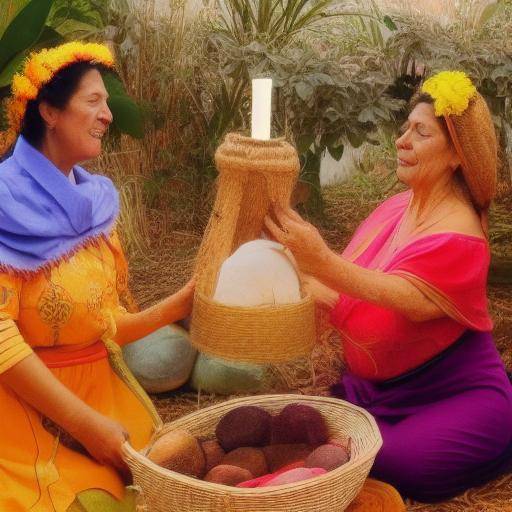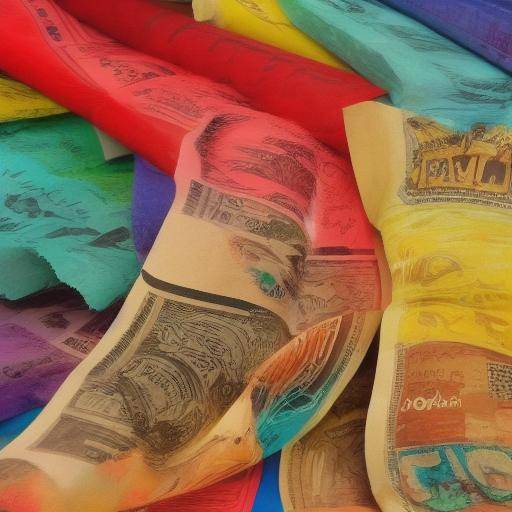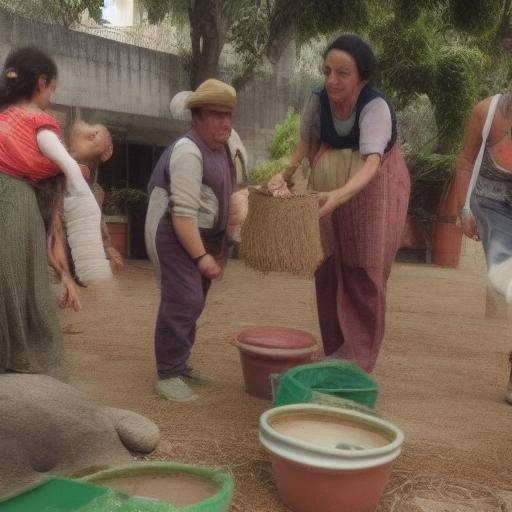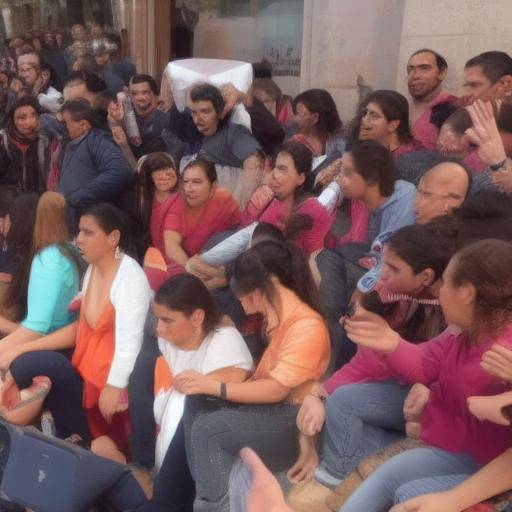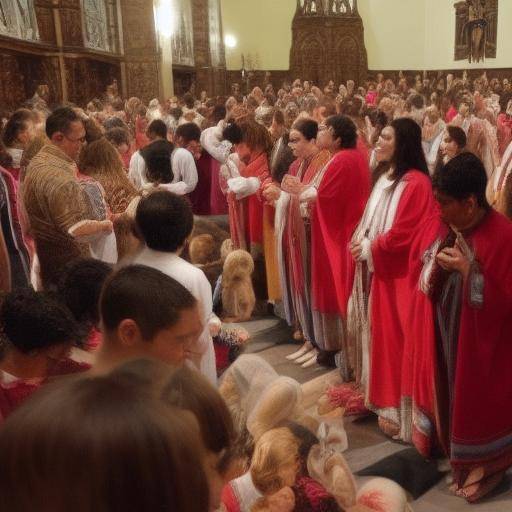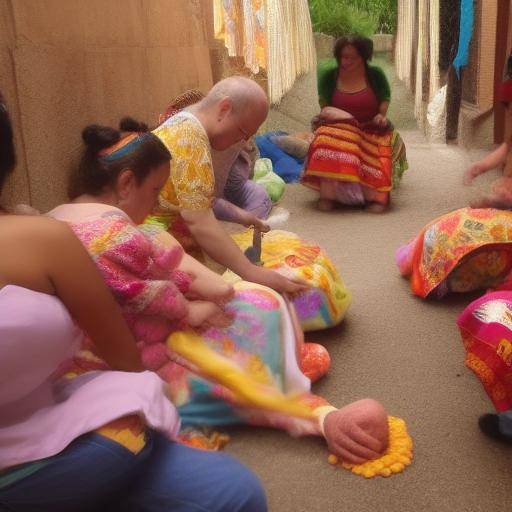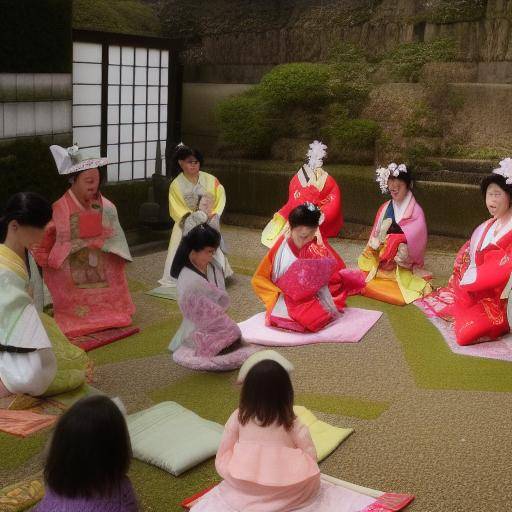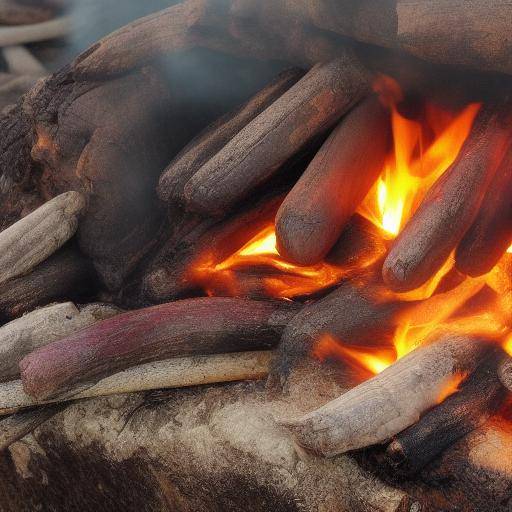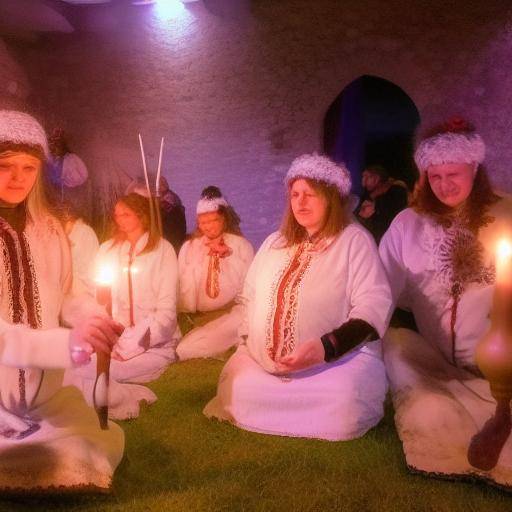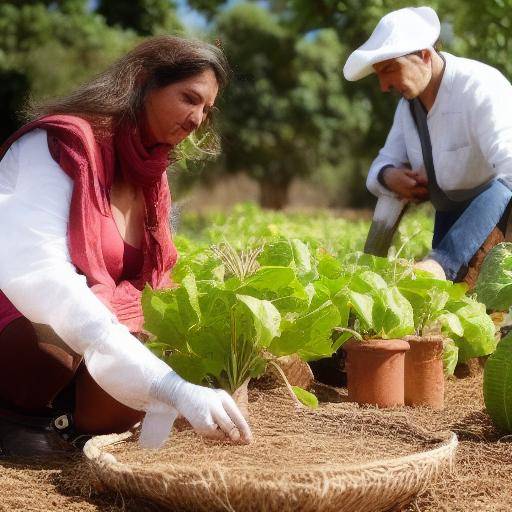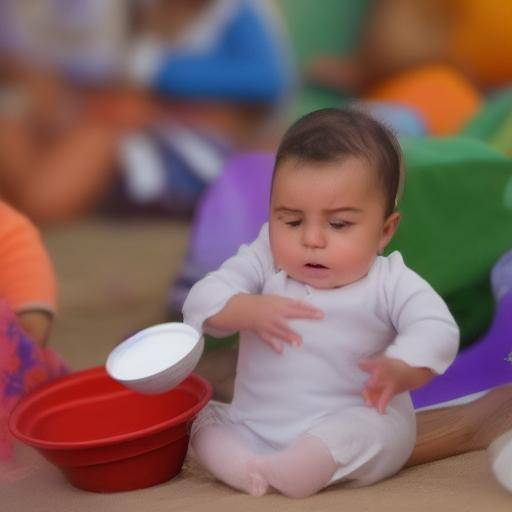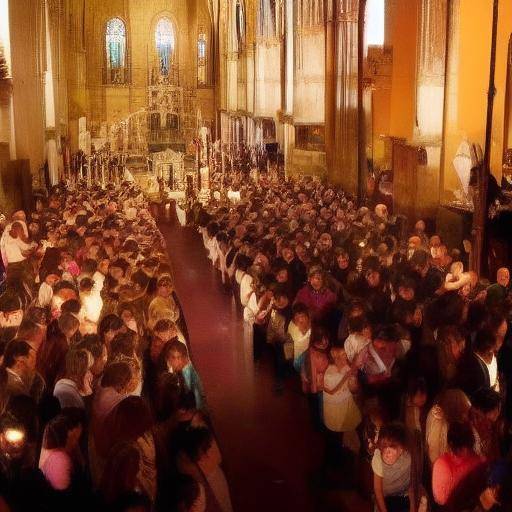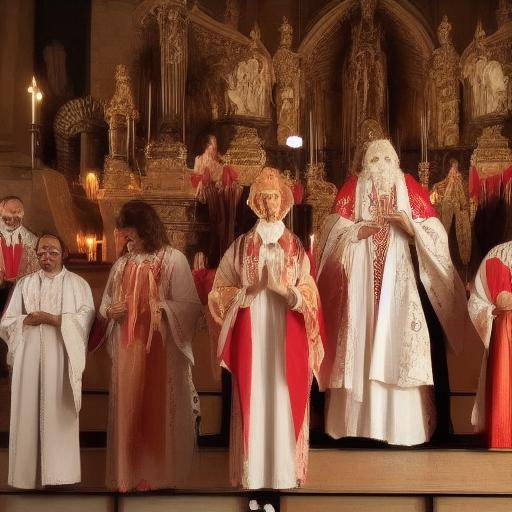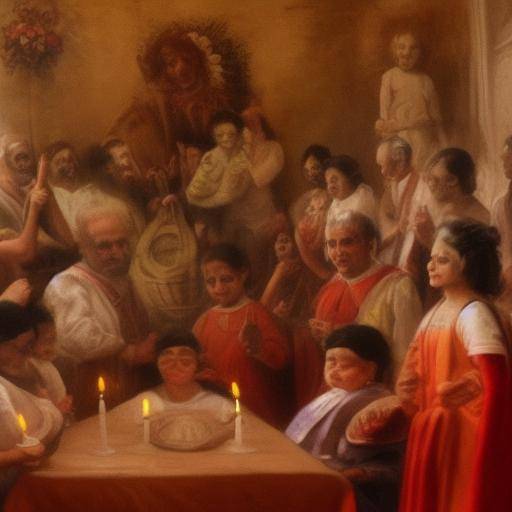
Introduction
Since time immemorial, fertility rituals have played a crucial role in many cultures around the world. In this extensive article, we will explore in detail the ancient rituals of fertility in Nordic culture, revealing its meaning, evolution throughout history, and its impact on contemporary society. Immerse yourself in the exciting world of fertility rituals and the rich heritage of Nordic culture while unraveling ancestral traditions and their relevance today.
History and Background
The Nordic culture, also known as Viking culture, has been historically recognized for its deep connection with nature and its emphasis on the fertility of the land and the community. Since ancient times, the Nordic peoples carried out rituals that sought to ensure the fertility of the earth to ensure good harvests, as well as the fruitfulness of their animals and their communities.
Origins and Evolution
Fertility rituals were an essential part of Nordic life, rooted in pagan beliefs that focused on the veneration of deities associated with fertility and renewal. These rituals were performed in seasonal festivities, such as the Summer Solstice and the Autumn Equinox, where offerings and dances were made to invoke the benevolence of the gods.
Historical importance
Fertility was regarded as a vital element for the survival of the Nordic communities, and therefore the rituals associated with it were at the centre of their cosmovision. These rituals were not only aimed at ensuring the growth of crops, but were also linked to the perpetuation of family lines and the general welfare of society.
Significant developments
With the advent of Christianity in the region, many of the ancient fertility rituals were suppressed or adapted to fit into the new religious worldview. However, in some remote areas, these traditions survived in an underlying way, retaining elements of their ancestral practices.
Analysis in Deep
Despite the evolution of Nordic society, traditional practices around fertility rituals retain a significant presence in the contemporary culture of the region. The connection with nature and the valuation of fertility remain elements rooted in the Nordic identity, and continue to manifest in various cultural expressions. Ecological awareness and respect for the balance between humanity and nature are aspects that resonate deeply in modern Nordic culture.
Current Benefits and Challenges
The focus on fertility and the harmonious relationship with nature has been fundamental for the conservation of the Nordic landscape and the well-being of its society. However, it also faces challenges in the context of industrialization and globalization, which have raised questions about the sustainability of these practices in the modern world.
Diverse Perspectives
Opinions regarding fertility rituals in Nordic culture encompass a broad spectrum, from those who consider them to be a valuable part of cultural identity, to those who perceive them as relics of the past without relevance in the present. This diversity of perspectives reveals the wealth and complexity of the interaction between tradition and change in Nordic culture.
Comprehensive review
Over the years, the influence of fertility rituals and Nordic culture has transcended their geographical borders, gaining relevance in different contexts and cultures around the world. We will explore contemporary applications of these ancient rituals and examine best practices to preserve their essence in an increasingly interconnected world.
Current Applications and Best Practices
Traditions related to fertility rituals and Nordic culture have become attractive for both locals and visitors, generating an economic boost through cultural tourism. The preservation of these rituals and their presentation as living heritage has become a strategy to keep the Nordic cultural heritage alive.
Expert and Future Perspectives
Various experts in anthropology, history and cultural studies have analysed the importance of preserving fertility rituals in Nordic culture, highlighting its relevance as an integral part of cultural legacy. They have also identified the need to adapt these traditions to changing global realities, maintaining a balance between conservation and adaptation.
Comparative analysis
Fertility rituals in Nordic culture share similarities and differences with other fertility traditions in different cultures around the world. Compare and contrast these practices shed light on the unique aspects of Nordic culture and their contribution to global cultural heritage.
Similarities and Variances
While it is true that most cultures have developed rituals linked to fertility and connection to land, Nordic culture presents particularities in its practices and beliefs. The relationship with the Nordic deities and the uniqueness of the symbolic elements present in these rituals distinguish the Nordic culture from other traditions of fertility worldwide.
Examples Detailed and Scenarios
To present concrete examples of fertility rituals in Nordic culture, together with comparisons with rituals of other cultures, allows for a wider and more detailed understanding of ritual practices, as well as their cultural context and associated symbolism.
Practical Tips and Accessible Recommendations
For those interested in living the experience of Nordic fertility rituals, we offer practical advice and recommendations to understand and participate respectfully in these venerable traditions.
- Participate in local festivals and cultural events to witness fertility rituals in their original context.
- To report on the symbolic meaning of the various elements used in rituals and to integrate in a respectful manner with the local community.
- Support the conservation of the natural spaces associated with these rituals, contributing to the preservation of the flora and fauna of the Nordic environment.
Industrial ideas and expert opinions
The views of experts in the field of Nordic culture and anthropology provide us with valuable insights on the role of fertility rituals at present, as well as their implications for the future of the region and the world at large.
Industry Analysis and Predictions
The integration of fertility rituals in tourism and cultural offerings has attracted renewed interest in Nordic traditions, generating new opportunities for entrepreneurs and professionals in the cultural sector. These trends are projected to continue to grow, in line with increased global interest in ancestral and sustainable practices.
Case Studies and Practical Applications
Examining specific cases of the application of fertility rituals in Nordic culture allows us to understand their influence and relevance in contemporary society. Studying real practices gives us a detailed view of how these traditions manifest in the daily lives of the Nordic communities.
Results and Lessons Learned
Cases of applying fertility rituals in modern contexts reveal the ability of these traditions to connect people with their cultural roots, strengthening their identity and promoting greater care for the natural environment. At the same time, they also reveal challenges and possible areas of improvement in the preservation and adaptation of these ancestral practices.
Future Trends and Predictions
In anticipation of the future, we will discuss emerging trends related to fertility rituals in Nordic culture, as well as predictions based on current data and expert opinion.
Emerging trends
The growing global interest in sustainability and ancestral traditions predicts an increase in the assessment and dissemination of the Nordic fertility rituals, both within and outside the region. Digitalization and accessibility of information will promote the dissemination and understanding of these practices, promoting greater respect and appreciation for the Nordic cultural heritage.
Conclusion
The ancient rituals of fertility in the Nordic culture have endured over the centuries, transcending time and preserving their deeply rooted roots in connection with nature and fertility. Its legacy is projected into the future, enriching the understanding of the history and identity of the Nordic communities, and offering important lessons on the harmonious interaction between human beings and their environment.
Frequently asked questions
What is the importance of fertility rituals in Nordic culture?
Fertility rituals have been and continue to be a fundamental part of the Nordic culture, linked to the connection with the nature, renewal and fertility of the earth. These practices have played a crucial role in the history and identity of the Nordic communities.
What are some outstanding examples of Nordic fertility rituals?
The Blót, an offering ritual and celebration associated with seasonal holidays, and the use of symbols such as the tree of life and the hammer of Thor, are emblematic examples of fertility rituals in Nordic culture.
How are the Nordic fertility rituals adapted in the modern era?
Fertility rituals are being adapted to contemporary contexts through cultural festivals, conservation initiatives of the natural environment and integration into the tourist offer, preserving its essence and symbolic meaning.
What impact do the Nordic fertility rituals have today?
These rituals have a significant impact on the connection between people and their natural environment, promoting environmental care and strengthening the Nordic cultural identity.
Where can I witness Nordic fertility rituals in an authentic way?
Cultural festivals and rural communities in Scandinavia offer opportunities to participate and witness authentically the Nordic fertility rituals, allowing an immersion in these ancestral traditions.
What is the role of Nordic culture in the current global context?
The Nordic culture has acquired relevance worldwide, not only because of its fertility rituals, but also because of its focus on the sustainability, equality and preservation of cultural heritage, with a significant influence on the global level.
In short, the wealth of ancient fertility rituals in Nordic culture reveals a profound and lasting cultural legacy, whose relevance transcends the borders of time and space, and continues to enrich the contemporary world with its ancestral wisdom.

